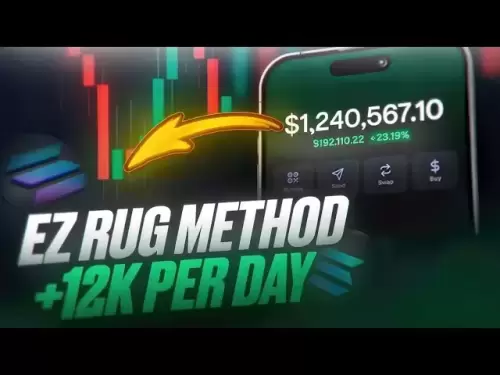-
 Bitcoin
Bitcoin $108,703.4836
0.45% -
 Ethereum
Ethereum $2,576.6839
1.58% -
 Tether USDt
Tether USDt $1.0001
0.00% -
 XRP
XRP $2.2924
-0.87% -
 BNB
BNB $660.2136
0.01% -
 Solana
Solana $151.4729
-0.29% -
 USDC
USDC $1.0000
0.00% -
 TRON
TRON $0.2866
0.04% -
 Dogecoin
Dogecoin $0.1698
0.82% -
 Cardano
Cardano $0.5831
0.13% -
 Hyperliquid
Hyperliquid $37.9814
-3.97% -
 Bitcoin Cash
Bitcoin Cash $503.9489
1.93% -
 Sui
Sui $2.8994
0.74% -
 Chainlink
Chainlink $13.5429
0.38% -
 UNUS SED LEO
UNUS SED LEO $9.0693
-0.19% -
 Stellar
Stellar $0.2524
0.15% -
 Avalanche
Avalanche $18.1959
1.02% -
 Shiba Inu
Shiba Inu $0.0...01180
1.48% -
 Toncoin
Toncoin $2.7601
-0.76% -
 Hedera
Hedera $0.1606
0.96% -
 Litecoin
Litecoin $86.6105
0.26% -
 Monero
Monero $315.7691
-0.56% -
 Polkadot
Polkadot $3.3911
0.25% -
 Dai
Dai $1.0001
0.03% -
 Ethena USDe
Ethena USDe $1.0002
0.02% -
 Bitget Token
Bitget Token $4.3076
-0.05% -
 Uniswap
Uniswap $7.5901
3.66% -
 Aave
Aave $288.0954
0.35% -
 Pepe
Pepe $0.0...01002
1.64% -
 Pi
Pi $0.4578
0.09%
How to receive crypto on a Ledger wallet?
To receive crypto on your Ledger wallet, open Ledger Live, select the cryptocurrency, click "Receive," confirm on your device, and share the generated public address with the sender.
Jul 09, 2025 at 04:56 am
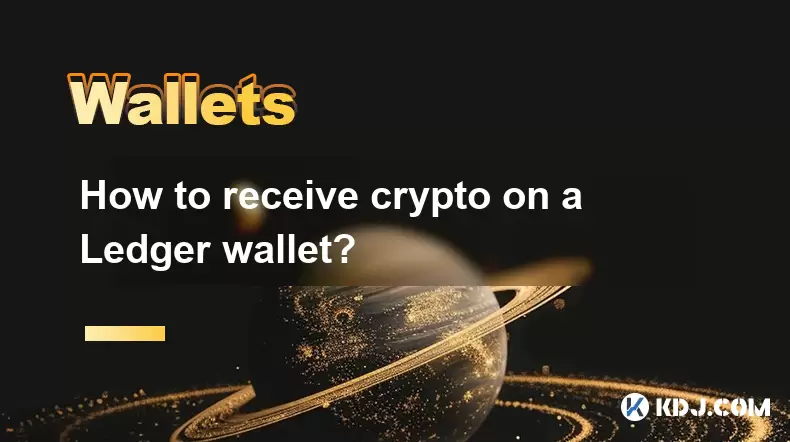
Understanding the Basics of Receiving Crypto on a Ledger Wallet
Receiving cryptocurrency on a Ledger wallet involves interacting with your hardware wallet through its companion software, Ledger Live. A Ledger wallet, such as the Nano S or Nano X, securely stores your private keys offline, ensuring that your funds remain protected from online threats. To receive crypto, you must share your public address with the sender. This public key is unique to each transaction and can be safely shared without compromising security.
It’s important to note that every cryptocurrency has its own blockchain and therefore requires a specific receiving address. For example, sending Bitcoin (BTC) to an Ethereum (ETH) address will result in the loss of funds unless recovery procedures are followed.
Setting Up Your Ledger Device for Receiving Cryptocurrency
Before you can receive crypto, ensure your Ledger device is properly configured:
- You have installed the Ledger Live application on your desktop or mobile device.
- The correct firmware is updated on your Ledger hardware wallet.
- The crypto app for the specific asset (e.g., Bitcoin, Ethereum) is installed via the Manager section in Ledger Live.
Once these prerequisites are met, you’re ready to proceed with generating a receiving address for your desired cryptocurrency.
Accessing the Correct App for Receiving Funds
Open Ledger Live and connect your Ledger device to your computer using the USB cable (or Bluetooth if using a Nano X). Navigate to the Manager tab and ensure the corresponding crypto app is installed. If not, install it by clicking the install button next to the coin name.
After installation, go back to the main screen and select the specific cryptocurrency you want to receive. This will open the account dashboard for that particular asset. Make sure you are on the correct account and derivation path if you have multiple accounts or advanced configurations enabled.
Generating and Sharing Your Public Address
To receive funds, follow these steps carefully:
- Open the selected cryptocurrency in Ledger Live.
- Click on the “Receive” button located at the top of the interface.
- Confirm the action on your Ledger device by pressing the buttons when prompted.
- A screen will appear showing your public receiving address, along with a QR code version.
You can now copy this address or scan the QR code and provide it to the sender. It is crucial that the sender uses the exact network protocol (e.g., BEP20 for Binance Smart Chain, ERC-20 for Ethereum) associated with the token they're sending. Sending tokens via the wrong network may lead to irreversible loss.
Verifying the Transaction After Receiving Crypto
Once the sender has initiated the transfer, you can monitor the status within Ledger Live under the “Transactions” tab for that cryptocurrency. Depending on network congestion and fees paid by the sender, it may take a few minutes to several hours for the transaction to be confirmed.
When the transaction appears as confirmed, the balance will reflect in your Ledger wallet. You can verify the number of confirmations required for the specific blockchain; some networks require more than three confirmations before considering the transaction final.
Troubleshooting Common Issues When Receiving Crypto
If the funds do not appear after an extended period, consider the following checks:
- Ensure the correct network was used for the transaction.
- Verify that the address provided matches exactly what was shown in Ledger Live.
- Check if the transaction is stuck due to low gas fees or network congestion.
- Confirm whether the sender used the correct token standard (e.g., USDT sent via TRC20 instead of ERC-20).
In case of discrepancies, cross-reference the transaction hash on a blockchain explorer like Etherscan for Ethereum-based tokens or Blockchair for Bitcoin.
Frequently Asked Questions
Q: Can I reuse the same receiving address for multiple transactions?
Yes, you can reuse the same public address for receiving funds. However, for enhanced privacy, it's recommended to use a new address for each transaction.
Q: What should I do if I accidentally send the wrong cryptocurrency to my Ledger wallet?
If you send the wrong token or use the incorrect network, recovery may still be possible if the recipient supports that network. Contact the Ledger support team immediately and provide the transaction hash for assistance.
Q: Why does the receiving address change every time I click “Receive”?
Each time you generate a new receiving address, it's part of a hierarchical deterministic (HD) wallet structure. This feature enhances privacy and security by avoiding repeated use of the same address.
Q: Do I need to keep my Ledger connected while waiting for a transaction?
No, once you’ve generated the receiving address, you can disconnect your Ledger device. The transaction will still arrive as long as the sender uses the correct address and network.
Disclaimer:info@kdj.com
The information provided is not trading advice. kdj.com does not assume any responsibility for any investments made based on the information provided in this article. Cryptocurrencies are highly volatile and it is highly recommended that you invest with caution after thorough research!
If you believe that the content used on this website infringes your copyright, please contact us immediately (info@kdj.com) and we will delete it promptly.
- Crypto Whale's Portfolio: Decoding Token Stashes and Emerging Trends
- 2025-07-09 08:30:12
- Rare Coin, Lucky Find, Valuable Coin: Unearthing Treasures in Everyday Change
- 2025-07-09 08:30:12
- HTX, WLFI, and Stablecoins: Navigating the Future of Digital Finance
- 2025-07-09 08:50:12
- Dogecoin to $10? Analyzing the Skyrocket Potential and the $10 Target
- 2025-07-09 08:50:12
- Kaspa, Fair Launch, and Crypto Barriers: A New Yorker's Take
- 2025-07-09 08:55:12
- Pudgy Penguins Price Prediction: Whale Bids and the Quest for $0.044
- 2025-07-09 08:55:12
Related knowledge

How to connect Trezor to Rabby wallet
Jul 09,2025 at 05:49am
What Is Trezor and Rabby Wallet?Trezor is a hardware wallet developed by SatoshiLabs that allows users to securely store their cryptocurrency assets o...

What happens if I forget my Trezor passphrase
Jul 09,2025 at 03:15am
Understanding the Role of a Trezor PassphraseIf you use a Trezor hardware wallet, you may have set up a passphrase as an extra layer of security beyon...
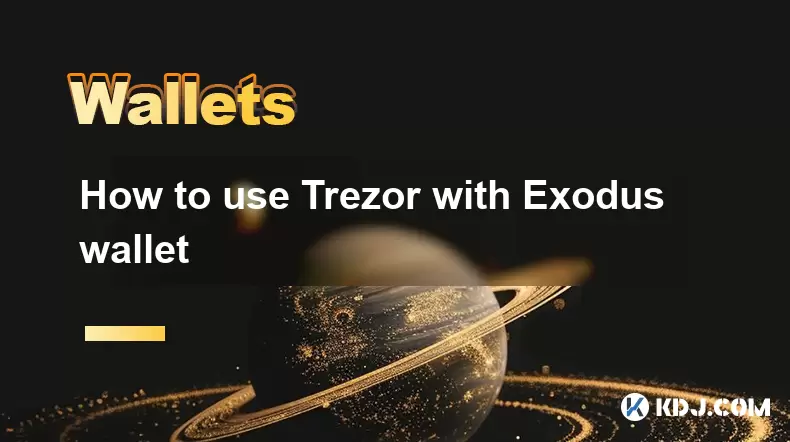
How to use Trezor with Exodus wallet
Jul 09,2025 at 12:49am
Connecting Trezor Hardware Wallet to Exodus Software WalletTo use Trezor with Exodus wallet, users need to connect the hardware wallet to the software...
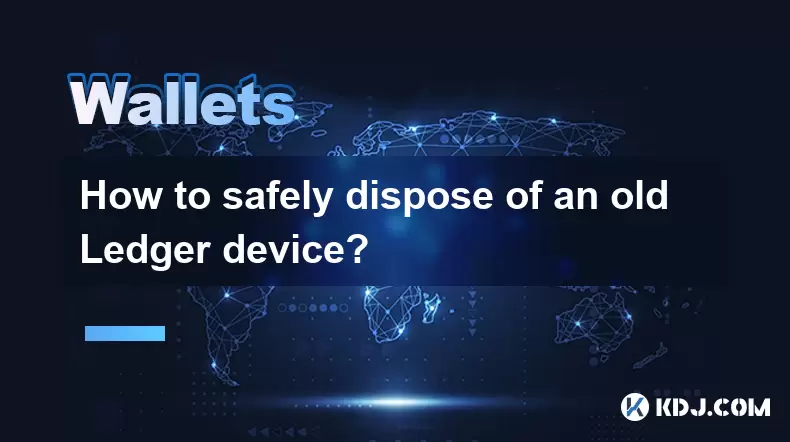
How to safely dispose of an old Ledger device?
Jul 09,2025 at 06:57am
Understanding the Risks of Disposing of a Ledger DeviceWhen you decide to dispose of an old Ledger device, it's important to understand that this is n...
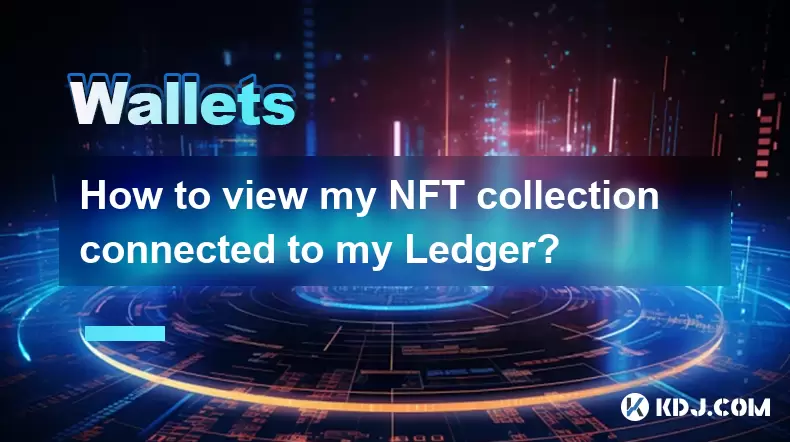
How to view my NFT collection connected to my Ledger?
Jul 09,2025 at 07:35am
Understanding NFTs and Ledger Wallet IntegrationNon-Fungible Tokens (NFTs) have become a popular way to represent ownership of digital assets on the b...
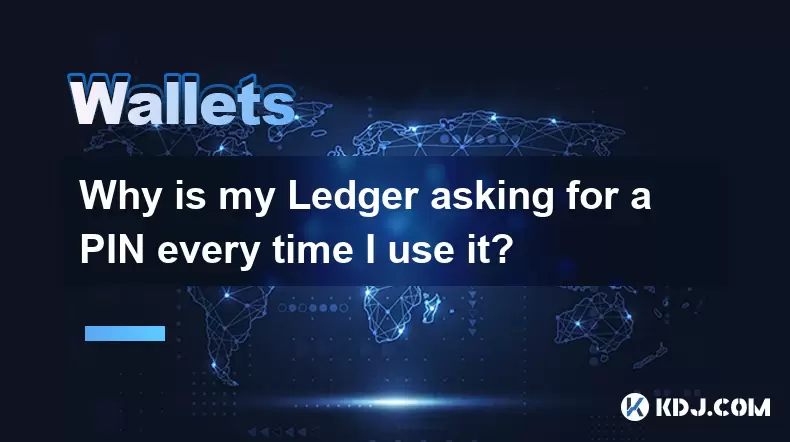
Why is my Ledger asking for a PIN every time I use it?
Jul 08,2025 at 11:21pm
Understanding the Purpose of the PIN on Your Ledger DeviceThe PIN (Personal Identification Number) is a crucial security feature built into every Ledg...

How to connect Trezor to Rabby wallet
Jul 09,2025 at 05:49am
What Is Trezor and Rabby Wallet?Trezor is a hardware wallet developed by SatoshiLabs that allows users to securely store their cryptocurrency assets o...

What happens if I forget my Trezor passphrase
Jul 09,2025 at 03:15am
Understanding the Role of a Trezor PassphraseIf you use a Trezor hardware wallet, you may have set up a passphrase as an extra layer of security beyon...

How to use Trezor with Exodus wallet
Jul 09,2025 at 12:49am
Connecting Trezor Hardware Wallet to Exodus Software WalletTo use Trezor with Exodus wallet, users need to connect the hardware wallet to the software...

How to safely dispose of an old Ledger device?
Jul 09,2025 at 06:57am
Understanding the Risks of Disposing of a Ledger DeviceWhen you decide to dispose of an old Ledger device, it's important to understand that this is n...

How to view my NFT collection connected to my Ledger?
Jul 09,2025 at 07:35am
Understanding NFTs and Ledger Wallet IntegrationNon-Fungible Tokens (NFTs) have become a popular way to represent ownership of digital assets on the b...

Why is my Ledger asking for a PIN every time I use it?
Jul 08,2025 at 11:21pm
Understanding the Purpose of the PIN on Your Ledger DeviceThe PIN (Personal Identification Number) is a crucial security feature built into every Ledg...
See all articles


























